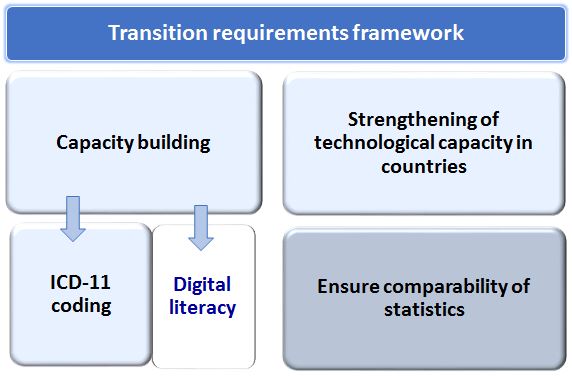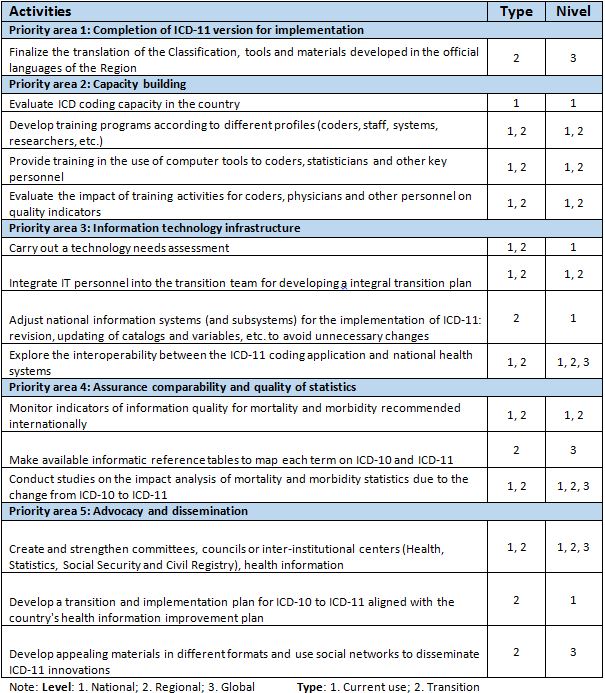Preparing the Region of the Americas for ICD-11: Roadmap of actions for ICD-11 transition and implementation
Background
Usually, the years before and after the launch of a new classification a considerable amount of work is generated due to the preparation time and implementation for use by the health professionals in the countries. For the first time, countries in the Region of the Americas had the opportunity to participate in the earlier stages of developing a new classification. Since 2015 the Pan American Health Organization (EIH/HA Unit) has been collaborating with WHO and coordinating the participation of several countries of the Region in the activities related to the preparation of ICD-11, particularly the collaborative translation into Spanish and pilot testing in English and Spanish.
Taking into consideration the growing interest of countries, the EIH/HA Unit carried out a self-assessment to identify the current needs of ICD and the requirements for the transition to ICD-11 in the country. The respondents were relevant professionals from Ministry of Health and National Institutes of Statistics. Results have shown interesting results such as the strong adoption of ICD in different settings (mortality, surveillance, hospitalizations, electronic medical records, emergency departments, etc.) and many countries have integrated databases of morbidity and mortality at central level. The findings produced can also be useful to identify gaps and strengthen capacities at national and local level, including primary care. For example, some differences regarding technological capacities between national, sub-national and local levels are marked. Around 74% of national administration responsible for health data or statistics have high computer availability but at the sub-national level this percentage decreases to 42% and at doctors’ offices it drops to 17%. However, main problems were also identified such as lack of human and financial resources, insufficient number of trained coders, and fast turnover of information staff.
During the 1st Regional workshop on ICD-11 in September 2017, in Bogota, Colombia, with the participation of nineteen Member States, these results were discussed, and a road map was developed to provide countries with a planning tool to guide activities related to the current needs of ICD-10 and the requirements for the transition and implementation of ICD-11. The Roadmap is envisioned as a living-document to be revised and adjusted according to national needs and resources. Taking into consideration the characteristics of the new classification, the implementation will not only require training for coders, but will also various activities distributed according to the following five priority areas:
1. Completion of ICD-11 version for implementation
2. Capacity building
3. Information technology infrastructure
4. Assurance of comparability and quality of statistics
5. Advocacy and dissemination
Figure 1 shows the framework for transition requirements and Table 1 shows some examples of activities included in this road map are presented in Table 1. The activities proposed are essential for generating reliable information that can help to save lives and improve the well-being. In addition, they will contribute to monitor national, regional and international commitments such as the PAHO Strategic Plan and the Sustainable Development Goals (SDGs).
Figure 1: Framework of the requirements for the transition and implementation of ICD-11
Table 1: Examples of activities included in the PAHO road map for the transition and implementation
For information:
Vilma Gawryszewski, PAHO, e-mail: gawryszv@paho.or

